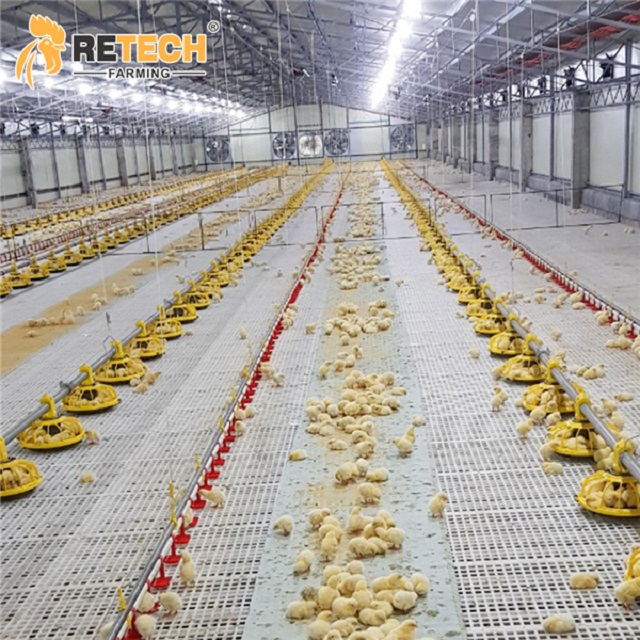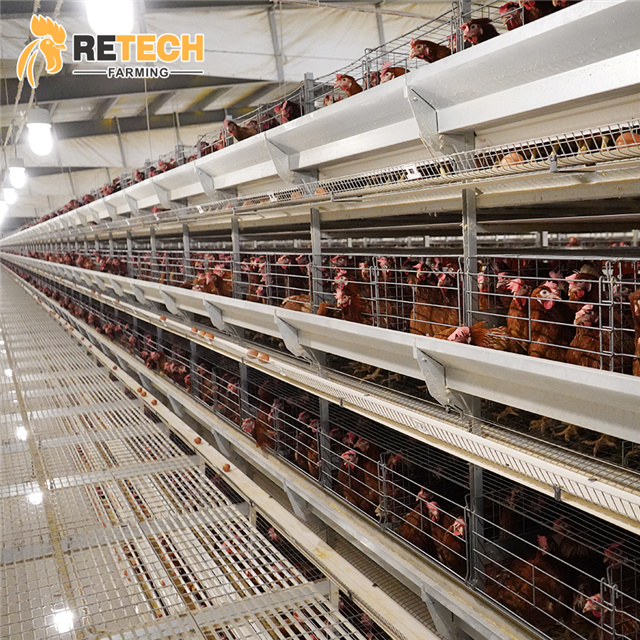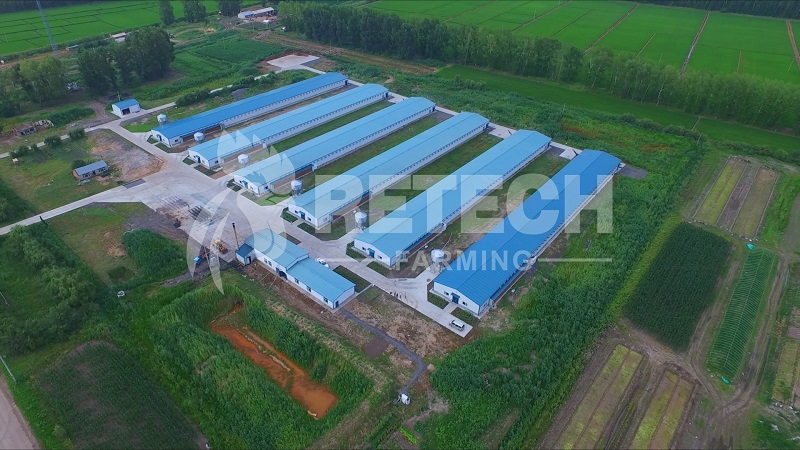Dezenfeksyon nanabri poulse yon pwosedi esansyèl pou elve poul, ki gen rapò ak kwasans an sante nan twoupo poul yo, epi li se youn nan fason enpòtan pou kontwole sanitasyon anviwònman an ak transmisyon maladi nan etab poul yo.
Dezenfeksyon ak poul nan kaj poul la pa sèlman ka netwaye pousyè k ap flote nan kaj poul la, men tou, anpeche pwopagasyon divès maladi bakteri ak viral, epi kreye yon bon anviwònman k ap viv pou poul yo.
1. Preparasyon anvan dezenfeksyon
Anvan dezenfeksyon an, kiltivatè yo ta dwe netwaye mi yo, planche yo, kaj yo, istansil yo bay manje, lavabo yo ak lòt bagay divès nan etab poul yo alè. Dwe gen kèk matyè òganik nan kote sa yo, tankou poupou, plim, dlo egou, elatriye. Si yo pa netwaye yo alè, yo ta dwe dezenfekte yo, sa ap afekte efè dezenfeksyon an anpil, fè yon bon travay nan sanitasyon ak netwayaj davans, epi fè preparasyon anvan dezenfeksyon, pou reyalize yon pi bon efè dezenfeksyon.
2. Seleksyon dezenfektan yo
Kounye a, nou pa ka chwazi medikaman dezenfeksyon san reflechi, ki pa vize yon pwodui espesifik. Lè kiltivatè yo ap chwazi dezenfektan, yo ta dwe fè tout sa yo kapab pou yo chwazi yon faktè pwoteksyon anviwònman ki wo, ki pa toksik, ki pa koroziv, epi ki an sekirite pou itilize. An menm tan, kiltivatè yo ta dwe konsidere tou faktè tankou laj twoupo a, ansanm ak kondisyon fizik la ak sezon an, epi chwazi yo yon fason ki planifye.
3. Pwopòsyon medikaman dezenfeksyon yo
Lè w ap melanje medikaman dezenfeksyon yo, li nesesè pou w peye atansyon sou melanj lan dapre enstriksyon pou itilizasyon yo. Kiltivatè yo pa ka chanje konsistans medikaman yo jan yo vle. An menm tan, fè atansyon ak tanperati dlo yo prepare a. Ti poul yo ta dwe itilize dlo tyèd. Anjeneral, poul yo itilize dlo frèt nan ete epi dlo tyèd nan sezon ivè. Tanperati dlo tyèd la jeneralman kontwole ant 30 ak 44 °C.
Li enpòtan pou note tou ke medikaman ki prepare a ap fini nan yon ti tan, epi li pa ta dwe estoke pou yon bon bout tan, pou li pa afekte efikasite medikaman an.
4. Metòd espesifik dezenfeksyon an
Lè w ap itilize esterilizatè poul la, ou dwe peye atansyon tou sou chwa jeneral yon vaporizatè manyèl ki mache ak yon sak lekòl, epi dyamèt bouch la se 80-120 µm. Pa chwazi yon kalib ki twò gwo, paske patikil bwouya yo twò gwo epi yo rete nan lè a pou yon ti tan, epi si yo tonbe dirèkteman sou plas la, yo p ap ka dezenfekte lè a, epi sa ap lakòz tou twòp imidite nan kay poul la. Pa chwazi yon ouvèti ki twò piti, moun ak poul yo fasil pou respire maladi tankou enfeksyon nan aparèy respiratwa.
Apre pèsonèl dezenfeksyon an fin mete ekipman pwoteksyon an, yo kòmanse dezenfeksyon an nan yon bout kaj poul la, epi bouch la ta dwe 60-80cm lwen sifas kò poul la. Nan moman sa a, nou pa ta dwe kite okenn kwen ki pa kouvri, epi eseye dezenfekte tout kote otank posib. Anjeneral, volim espre a kalkile dapre 10-15ml pou chak mèt kib espas. Anjeneral, dezenfeksyon an fèt 2 a 3 fwa pa semèn. Vantile alè apre dezenfeksyon an pou asire ke kaj poul la sèk.
Lakaj poulYo ta dwe vantile nan direksyon van an pandan jounen an, epi eseye pa pwodui gaz amonyak. Si gaz amonyak la lou, li pral lakòz anpil maladi. Pou yon kaj poul anplis, apre ou fin flite dezenfektan an, fèmen tout fenèt oswa pòt ki ozalantou kaj poul la pou apeprè twa èdtan, epi eseye fè dezenfeksyon an nan tan solèy. Apre dezenfeksyon an, vantile pou plis pase twa èdtan, oswa lè prèske pa gen okenn sant amonyak, kondui ti poul yo nan kaj poul la.
Dat piblikasyon: 5 me 2023










